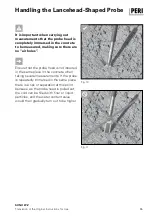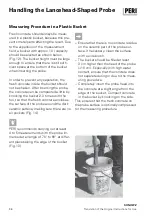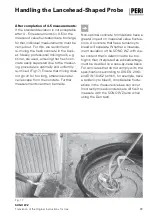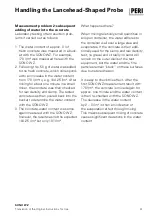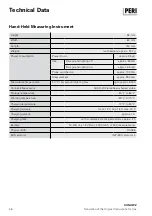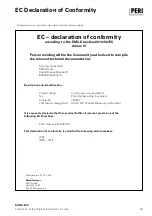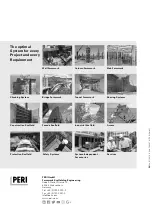
39
Handling the Lancehead-Shaped Probe
SONO WZ
Translation of the Original Instructions for Use
After completion of 4-5 measurements:
If the standard deviation is not acceptable
after 4 - 5 measurements (i> 0.5) or the
measured value fluctuations are too large,
further individual measurements must be
carried out. For this, we recommend
re-mixing the fresh concrete in the buck-
et. Ideally, professional mixing tools, e.g.
stirrer, are used, ensuring that fresh con-
crete easily separated due to the measur-
ing procedure is optimally and uniformly
re-mixed. (Fig 17) Ensure that mixing does
not go on for too long, otherwise water
can escape from the concrete. Further
measurements can then be made.
Non-optimal concrete formulations have a
greater impact on measured value fluctua-
tions. A concrete that has a tendency to
bleed will separate. Whether a measure-
ment deviation of the SONO WZ with wa-
ter content that is determined to be too
high is then interpreted as a disadvantage,
must be decided on a case-by-case basis.
For concretes that do not comply with the
specifications according to DIN EN 206-1
and DIN 1045-2 (which, for example, have
a tendency to bleed), considerable fluctu-
ations in the measured values can occur.
Incorrectly mixed concretes are difficult to
measure with the SONO WZ (also when
using the Darr test).
Fig. 17











